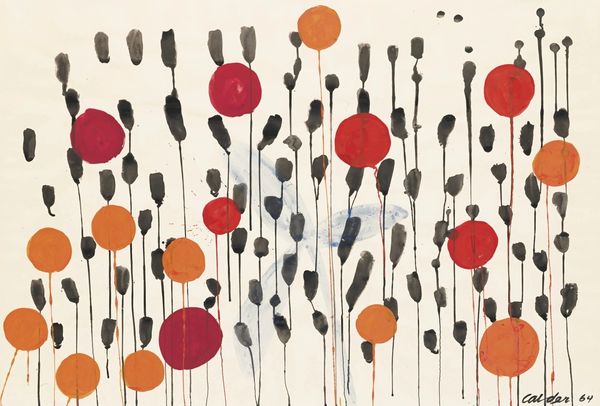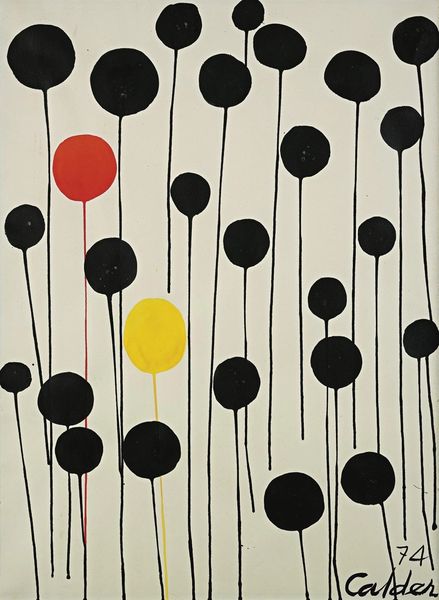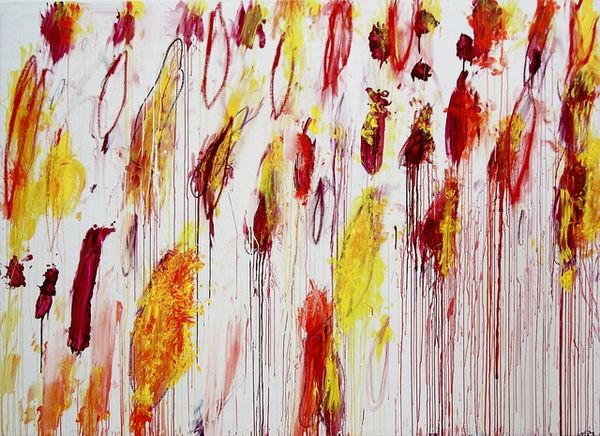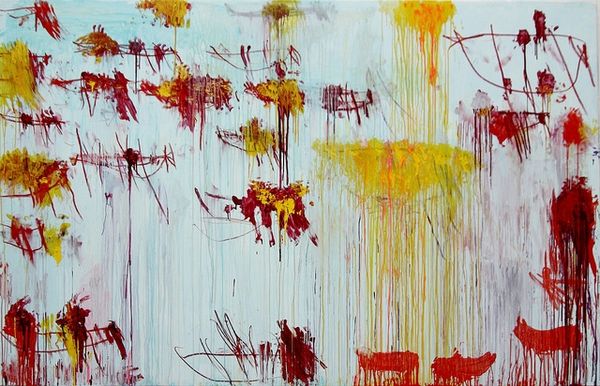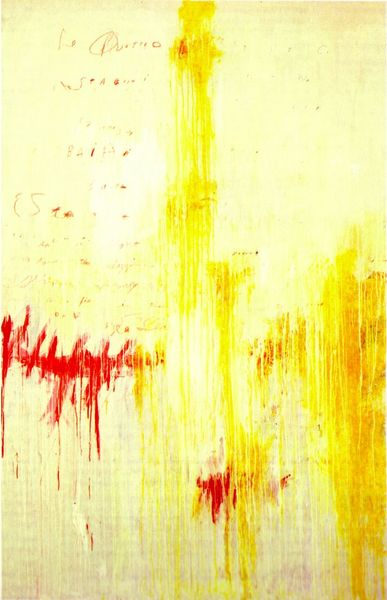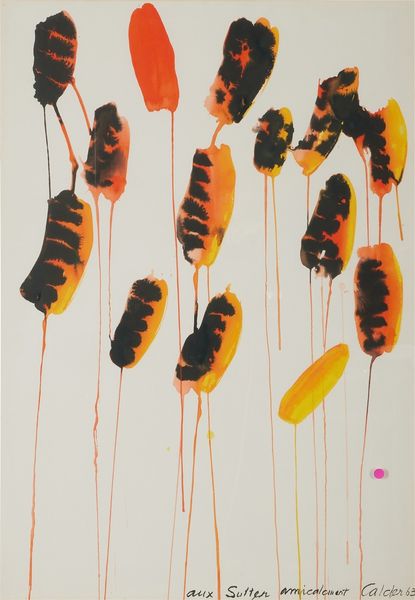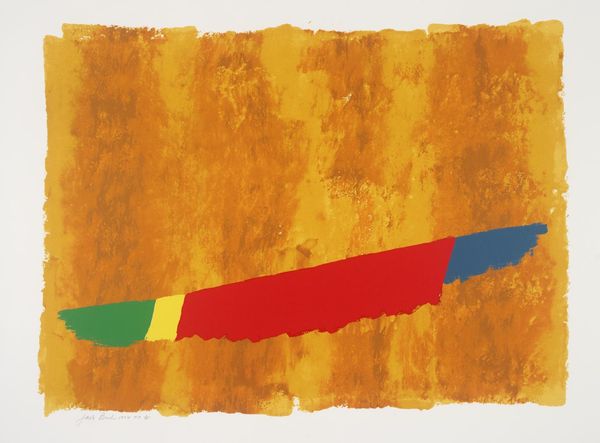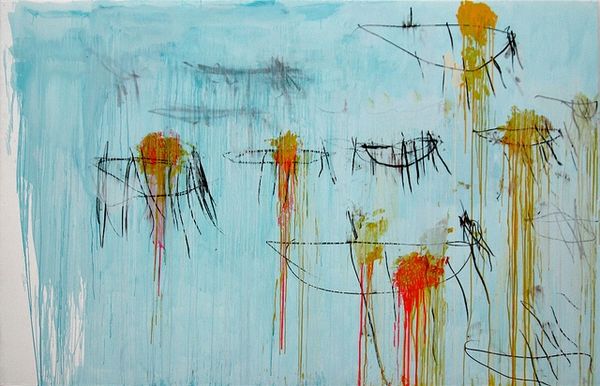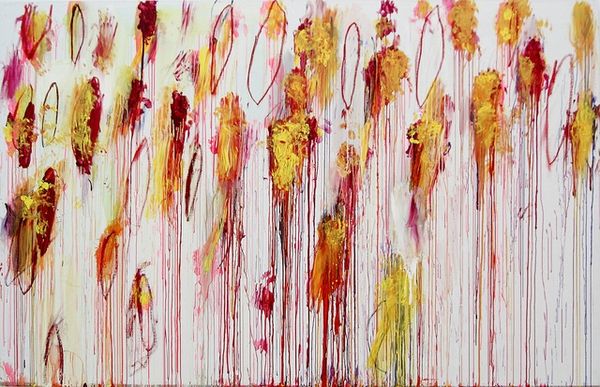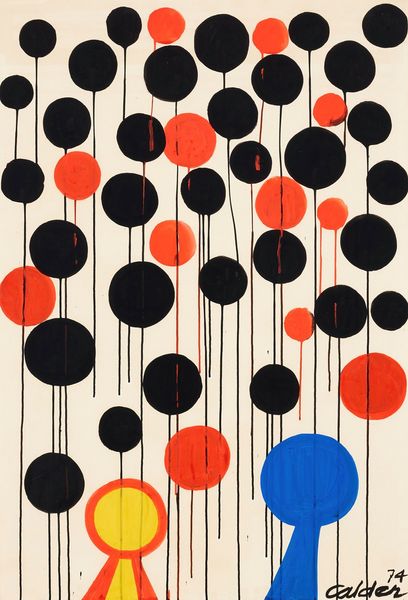
painting, acrylic-paint
#
painting
#
pop art
#
acrylic-paint
#
geometric
#
abstraction
#
line
#
modernism
Copyright: Modern Artists: Artvee
Curator: What strikes me immediately is how playful it feels, almost childlike, yet with a sophistication in the colour choices and line work. Editor: Indeed. This piece, titled "Drops", was completed in 1970 by Alexander Calder. He’s best known for his mobiles, but his paintings deserve attention. Here we see bold use of acrylic paint and dynamic lines playing against flat color fields. Curator: Thinking about it within the context of the late 60s, early 70s, it could also be a reflection on ecological crisis—suggesting perhaps the delicate balance of the natural world? Editor: Well, Calder often used materials industrially produced and then employed a direct painting process that allowed the nature of paint to display itself. We can see the flow, the viscosity—it suggests an open engagement with the materiality that would link the creative act to a form of work in which the production and consumption would matter the most. Curator: Interesting observation. But what if the bold use of color and form is rather a direct engagement with Pop Art, questioning how these geometric figures engage with contemporary society, or highlighting issues around consumerism? Editor: Perhaps, yet it could be that in the execution, by showing the drips and bleeds, we witness the artist relinquishing a certain degree of control—he sets parameters within which paint does as paint will do. Curator: That does lend it an element of chance, doesn't it? It brings a dynamism, a sense of life—countering the strict geometry. So this 'acceptance' could indicate, I argue, Calder’s artistic rebellion from mainstream cultural expectations through materials at that time? Editor: It could. Regardless, "Drops" becomes a rather interesting interplay between planned execution and process with an acceptance of material agency, echoing his kinetic sculptures' dance with gravity and air currents. Curator: An important reminder that materials, movements, and their significance can also shape and reshape culture. Thank you for your illuminating analysis. Editor: My pleasure; these dialogues constantly reshape the boundaries of the narrative between art and its viewers, like how the artwork does for color.
Comments
No comments
Be the first to comment and join the conversation on the ultimate creative platform.
